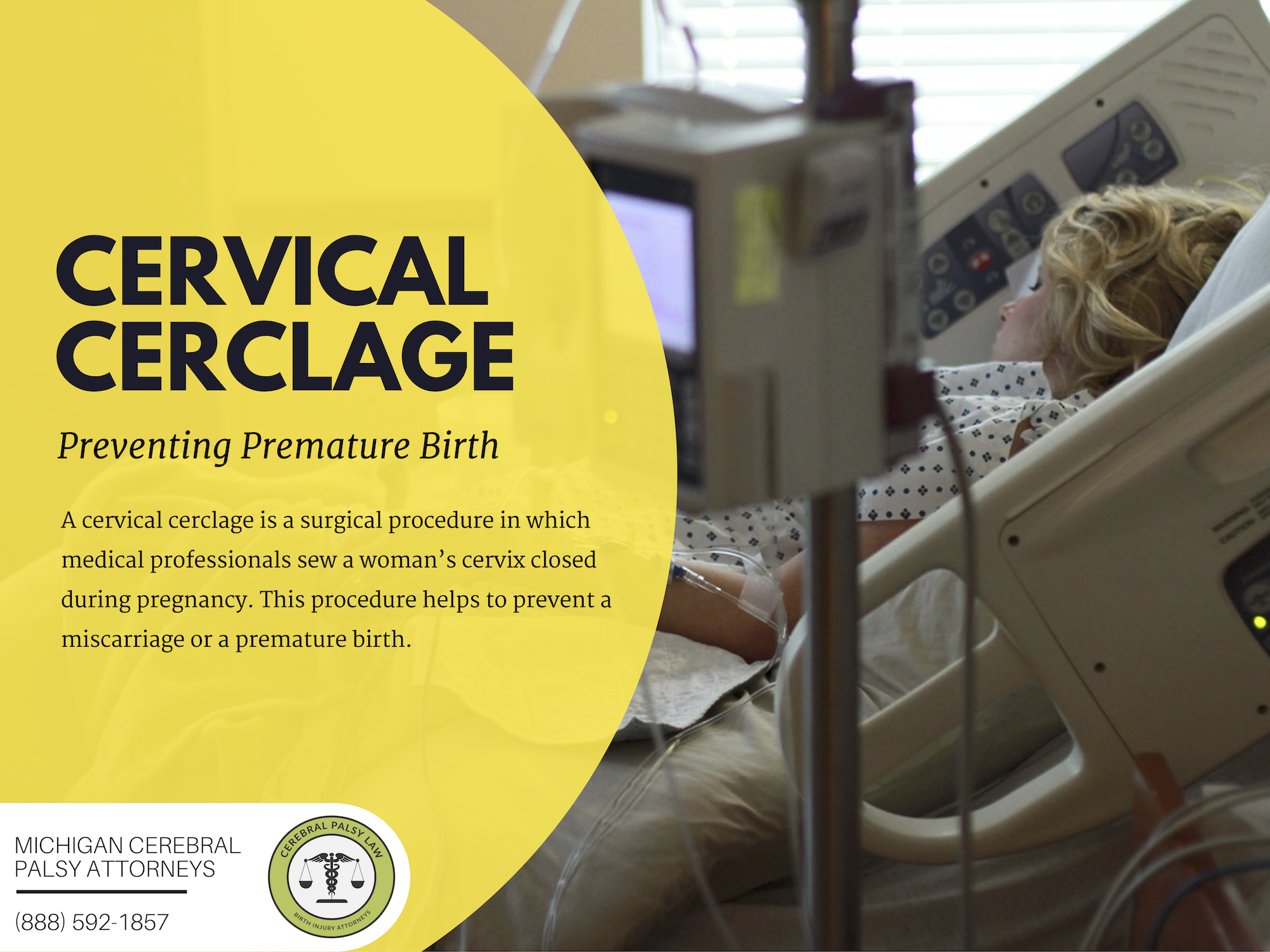What Is A Cervical Cerclage?
A cervical cerclage is a surgical procedure in which medical professionals sew a woman’s cervix closed during pregnancy. This procedure helps to prevent a miscarriage or a premature birth. Also known as a cervical stitch, the cervical cerclage procedure involves insertion of a large, sturdy suture into a woman’s uterus to reinforce the cervix and help it remain closed under the weight of the baby.

Why Might A Cervical Cerclage Be Performed?
The cervical cerclage procedure is done in order to prevent premature birth and/or miscarriage – both of which can be caused by cervical insufficiency. When a women has certain risk factors that indicate her cervix may be weakened, medical professionals often consider placing a cerclage. Factors that may indicate the need for a cervical cerclage include:
- Prior or current insufficient cervix
- Prior miscarriage
- Prior premature rupture of the membranes (PROM)
- Prior premature birth
- Prior cervical biopsy
- Prior cervical tearing
- Prior late-term abortion
- Short cervix
- Uterine problems
- Prior D&C procedure
Before performing a cervical cerclage, doctors should do a series of transabdominal ultrasounds in order to ensure that the patient is a good candidate for the procedure. Oftentimes mothers may benefit from progesterone therapy in conjunction with a cervical cerclage. Together, these methods help to prolong pregnancy and prevent preterm labor.
Timing of Cervical Cerclage
A cerclage is usually placed during early pregnancy, often within the first three months of gestation. This helps to reinforce the cervix so that changes such as cervical opening and cervical weakening do not occur. Proactively preventing these changes allows the fetus to grow and develop in the womb until near full gestation, when labor and delivery is safe.
Risks of Cervical Cerclage
The risks of cervical cerclage are very low, especially when considering the extreme benefits of preventing premature labor and/or miscarriage. Still, there are some present risks. They include:
- Premature rupture of the membranes (PROM)
- Cervical infection
- Premature contractions
- Vaginal bleeding
- Miscarriage
- Preterm labor
However, it is useful to know that many of these risks can occur due to cervical insufficiency, even if a cervical cerclage procedure is not performed.
Premature Labor, Cerebral Palsy, and Other Birth Injuries
If a mother has an insufficient cervix and a cerclage (or another cervical strengthening technique) is not ordered, she could go into premature labor, which could lead to a premature birth. A premature birth is defined as a birth that occurs prior to 39 weeks gestation. Babies born prematurely who suffer from oxygen deprivation are at a much higher risk for dangerous conditions such as:
- Hypoxic-ischemic encephalopathy (HIE)
- Cerebral palsy
- Intraventricular hemorrhage (IVH)
- Seizures
- Sepsis and meningitis
- Periventricular leukomalacia (PVL)
- Hydrocephalus
- Intellectual disabilities
- Developmental delays
Due to these dangers, it is crucial that medical professionals do everything in their power to prevent premature birth – a cervical cerclage is one way to accomplish this. If physicians do not take these measures, it is negligence; if an injury results, it is medical malpractice.
The information on this page is not medical advice and should not be treated as such. If you have any questions or concerns about the topics covered on this page, please contact your care provider.
Legal Help for Birth Injuries From Insufficient Cervix and Premature Birth
Michigan Medical Malpractice Attorneys
Physicians are obligated to identify, assess, and correctly manage cases of cervical insufficiency in order to prevent premature birth. If you believe a loved one underwent birth trauma due to mismanaged cervical insufficiency, or a premature birth, we encourage you to reach out to our experienced birth injury legal team.
Our nationally-recognized Michigan cerebral palsy attorneys have been helping families affected by cerebral palsy and birth injuries for decades. You can contact us for a free, confidential case review in one of the following ways:
